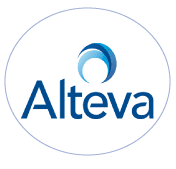Alteva uses NexOSS for real-time least cost routing
The Challenge
Alteva needed a dynamic LCR engine that could be updated in real time and ensure that every route was profitable.
Result
Alteva made the decision to switch to TransNexus’s next generation least cost routing solution, utilizing NexOSS software and OSPrey route servers. NexOSS is a centralized application for provisioning routes and rating Call Detail Records (CDRs). With this solution, least cost routing configurations are replicated from NexOSS to OSPrey. Alteva’s Sonus softswitch then routes calls to OSPrey, which determines the least cost routing and then send a SIP invite back to the switch with lowest cost routing instructions. By keeping the LCR table on a routing server, rather than directly on the switch, Alteva can now dynamically update multiple routing tables with millions of possible no loss routes.
Customer Take Away
NexOSS software was designed with the issues facing today’s VoIP carriers in mind. With a built-in number portability module and the ability to host the North American Number Portability Database (NPAC), NexOSS allows for LRN based routing, to ensure proper and up-to-date routes are available for all calls.
About Alteva
Alteva, a cloud-based Unified Communications (UC) solutions provider, offers the most reliable network, the most responsive and proactive customer service and the best value to its customers. It delivers BroadSoft based class 5 cloud-based UC solutions to businesses, resells their UC platform to other carriers at wholesale, and offers Sonus based class 4 origination and termination service for carriers. Alteva is one of the top ten largest hosted IP telephony and UC providers in North America.
The Challenge
Before coming to TransNexus, Alteva was using a static Least Cost Routing (LCR) system for carrier origination and termination business. The LCR system generated a static LCR table, limited to six digit dial codes and exported it directly to Alteva’s softswitch. The static LCR system was slow to update routing changes and could not eliminate unprofitable routes because of the six digit dial code routing limitation. Alteva needed a dynamic LCR engine that could be updated in real time and ensure that every route was profitable. Alteva needed an LCR solution with the following features:
- Dynamic - LCR must be updated quickly whenever a route or rate is changed.
- No loss routing - Every call must generate a profit or be rejected. This requires a minimum of seven digit routing to destinations based on 1000 block partitions (NPA-NXX-X).
- VoIP Fraud – Attacks have grown in popularity and are a real threat to VoIP providers. Calls must be screened for suspicious activity.
The Solution – Moving to Next Generation Least Cost Routing with NexOSS
Alteva made the decision to switch to TransNexus’s next generation least cost routing solution, utilizing NexOSS software and OSPrey route servers. NexOSS is a centralized application for provisioning routes and rating Call Detail Records (CDRs). With this solution, least cost routing configurations are replicated from NexOSS to OSPrey. Alteva’s Sonus softswitch then routes calls to OSPrey, which determines the least cost routing and then send a SIP invite back to the switch with lowest cost routing instructions.
By keeping the LCR table on a routing server, rather than directly on the switch, Alteva can now dynamically update multiple routing tables with millions of possible no loss routes. The routing server automatically updates in real times as rate changes occur in the billing system. NexOSS enables centralized routing control of distributed OSPrey routing servers that can serve both wholesale and retail business units with different softswitches.
As a next-generation solution, NexOSS software was designed with the issues facing today’s VoIP carriers in mind. With a built-in number portability module and the ability to host the North American Number Portability Database (NPAC), NexOSS allows for LRN based routing, to ensure proper and up-to-date routes are available for all calls.
NexOSS also collects the Call Detail Records (CDRs) as calls are completed, and creates detailed reports, giving Alteva near real time margin analysis. NexOSS reports show origination fees, termination fees, and gross profits by customer, product, provider, time of day, and dial code. NexOSS No Loss Least Cost Routing features allow Alteva to reject unprofitable calls. With NexOSS, Alteva has deep insight into their operations and the ability to structure their business to optimize profit.
Finally, NexOSS adds a layer of protection against VoIP fraud. By analyzing the CDRs and routing requests, NexOSS can detect fraudulent activity on Alteva’s network. When NexOSS detects fraud, it sends Alteva’s engineers automatic Email and SNMP alarms, and may also temporarily suspend the suspicious route from the routing table, effectively stopping the fraud event before Alteva starts losing money.
